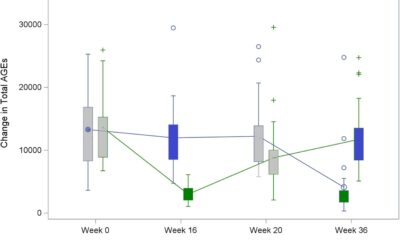Health
Many are still unaware of these heat-related illness symptoms, says research

Dizziness can be a sign that you are suffering from a heat-related illness. (Photo: Getty)
Are things getting too hot to handle? This thing called climate change seems to be making every summer hotter than the last July 22, 2024, now the hottest day ever recorded. But do you know when your body can no longer handle the heat? Well, a significant percentage of people may not know the basic symptoms of heat-related illnesses. This is evident from a recent study by the Annenberg Public Policy Center. This includes 58% of people who don’t realize that cold, pale, and clammy skin is a sign that your body is turning into a hot mess.
Yeah, having skin like that doesn’t exactly mean you’re cool as a cucumber or happy as a clam when exposed to high temperatures. Instead, it could be a uh-oh-you-may-be-experiencing-heat-exhaustion sign. Heat exhaustion occurs when your body is way too hot – in temperature and not in appearance – and can no longer cool itself. Heat exhaustion is part of a continuum of heat-related illnesses that can range from heat cramps, heat exhaustion and heat stroke.
This latest Annenberg Science and Public Health Knowledge (ASAPH) survey, conducted July 11 through July 18, 2024, by SSRSan independent market research company, did suggest that awareness of two key signs of heat-related illness has increased since a similar survey in August 2022. Awareness of dizziness as a sign increased from 86% to 89%. Awareness of nausea as a sign increased from 79% to 83%. But awareness of warm, red, dry or moist skin as a sign remained stable at 72%. The awareness of cold, pale and clammy skin as a sign has also not changed in the past year.
This last survey was the 20e wave of surveys of 1,496 US adults Asking a sample is obviously not the same as asking everyone in the US. But this sample is designed to be nationally representative and has been in use since April 2021. While the percentages from this sample may not be exactly the percentages of people across the country, it is reasonable to conclude that there are still a fair number of people who do not know all the signs of a heart-related disease. Researchers at the Annenberg Public Policy Center have calculated that the margin of sampling error (MOE) is plus or minus 3.6 percentage points at the 95% confidence level.
Heat cramps
The first stage of heat-related illnesses can be heat cramps, which usually affect the abdomen … [+]
This is when you start to experience painful cramps and spasms – as opposed to pleasurable cramps – in various muscles in your body, usually your legs and abdomen. It may be accompanied by heavy sweating, thirst and fatigue.
Of course, if this happens, you should get out of the heat and go somewhere cool. You can massage or knead the crampy areas. Also make sure you are well hydrated. Since you may have lost a lot of electrolytes through sweating, you may want to make sure these are also replenished through food or sports drinks. If such cramps last for more than an hour, seek medical attention immediately.
Heat exhaustion
The second stage of heat-related illness can be heat exhaustion. (Photo: Getty)
When you reach this stage, your body has probably lost too much fluid and electrolytes through sweating. You may still sweat profusely, but it is not enough to cool your body. You probably feel weak and tired. Your skin may have become cool, pale and clammy. Your pulse may be fast or weak. You may experience dizziness, nausea, vomiting, headache or even loss of consciousness.
You should definitely move to a cooler environment as soon as possible. Try cooling measures such as a cool shower, a cool bath, or covering your skin with towels soaked in cold water on your skin. Loosen your clothing to maintain circulation and dissipate heat. This is not the time to wear skinny jeans. Good hydration with electrolytes is important.
If symptoms continue to worsen or do not subside within an hour, seek immediate medical attention.
Heat stroke
This is when things have developed into a potentially life-threatening stage. When you hear the words “life-threatening,” you naturally think of a medical emergency. Signs of heat stroke include throbbing headache, confusion, nausea and dizziness. The body temperature can be higher than 103°F. Here you may see warm, red, dry, or moist skin. Your pulse may be fast and unusually strong. You may faint and lose consciousness.
If you suspect heat stroke, don’t be nervous. Call 911 and get to the emergency room as quickly as possible.
Here’s the hot take on climate change, which, by the way, is real. Unfortunately, all of the above heat-related conditions are likely to become increasingly common. So unless you get a good handle on when your body senses it’s too hot to handle, you could end up in more trouble than you can handle.













